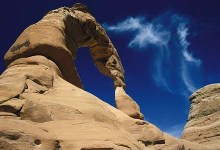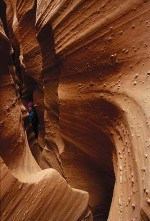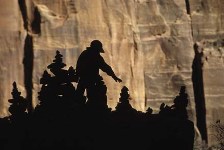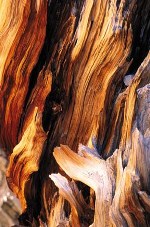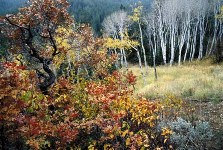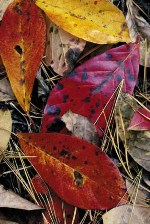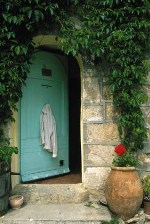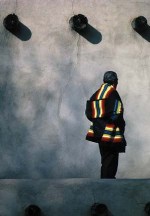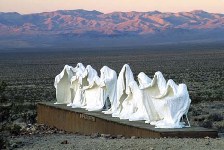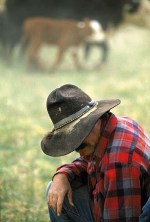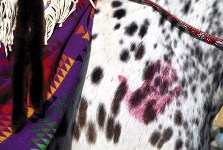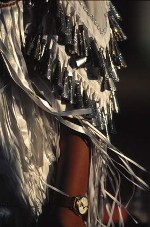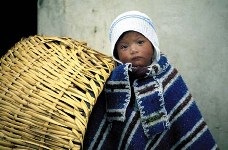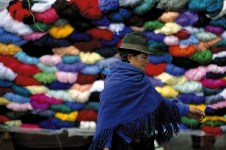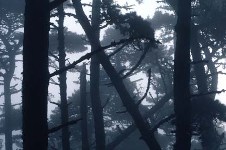Spring/Summer 2002, Volume 19.3
Art

Stephen Trimble
Bedrock Pilgrim
Salt Lake City naturalist, writer, and photographer Stephen Trimble has won significant awards for his non-fiction, his fiction, and his photography, including the Ansel Adams Award from The Sierra Club. His 18 books focus on homeland, wildland, and Indian land, including: Blessed By Light: Visions of the Colorado Plateau (editor); The Sagebrush Ocean: A Natural History of the Great Basin; The People: Indians of the American Southwest; The Geography of Childhood: Why Children Need Wild Places (with Gary Nabhan); and Earthtones: A Nevada Album (with Ann Ronald). Read other work by Stephen Trimble published in Weber Studies: Vol. 11.3 (essay), Vol. 19.3 (conversation).
I came to photography as a pilgrim. In my twenties, I was solitary, a seeker, and I spent considerable time camping alone, wandering the Canyon Country, looking through the viewfinder of my Nikon for patterns, for color, for epiphanies.
What was I really looking for? Relationship—with the world, with people, with myself. I began to learn how to look, how to see, how to find, while wriggling through prickly grass and warm sand in the Escalante wilderness, peering at ferns and wonderstone and reflections in potholes.
I had spent my college years poring over the work of the great photographers. The black-and-white bedrock of Stieglitz, Steichen, Weston, Ansel Adams. The wilderness landscapes of Eliot Porter and Philip Hyde—and, more than anything, the emotional photos of Ernst Haas, who so dramatically told the story of the elements, seasons, and creatures in The Creation.
We all know the icons—we've seen the standard views of Monument Valley and Yosemite a hundred times. I love the challenge of approaching such landmarks and looking for a new way to capture the soul of the place. As I pass beneath the elegant sculptural form of Delicate Arch, I look for interactions with foreground, with sky, with clouds. Once again, I look for relationship.
Deep wilderness needs no human visitor, no acknowledgment. The land will be there, vital with the heartbeat of the earth, with or without us. But when I enter the landscape with my family, through a slot canyon, along a trail, I try to photograph the connections we make—the connections we take with us.
Closer and closer, smaller and smaller, the natural world transforms into an endless series of patterns. I peer into blossoms, through backlit leaves, or scan the textures of ancient bristlecone wood, subtly shifting the composition, framing a graphic—one graphic among a hundred that could be framed.
The tenderness, the sensuality, the order of what I see when I simply deign to slow down and look thrills me.
Long ago, Dick Beidleman, my ecology professor at Colorado College, taught me to think like a naturalist, to pay attention as I walked through the world, to listen for bird calls, watch for raptors on fencelines, learn the difference between Douglas-fir and limber pine, notice the feathery grace of blue grama grass underfoot.
And so I pass slowly through the world, reminding myself to pay attention. When I am photographing, I notice color and texture and light. I watch for stories—the evocation of lives carrying on behind half-open doors, patterns on the forest floor like those that mesmerized Thoreau at Walden Pond.
At a Pueblo Feast Day dance, at a spring branding, people move through the scene, and I lie in wait, a hunter. At an outdoor sculpture garden on the rim of Death Valley, I move my tripod left and right, a foot forward, six inches back, lining up elements in my picture.
What Henri Cartier-Bresson called the "decisive moment" reveals a successful catch, when pattern and light and context and gesture come together—exquisitely, unequivocally.
For ten years, I traveled in Southwest Indian Country, looking for subjects for my photos that could tell the stories of this place and these people. Artists still work with the old designs, whether they make their mark on a hand-coiled pot or on a horse, paint the traditional designs on buffalo hide or on the satellite dish standing outside their hogan. Dancers still wear buckskins, moving with the sensuous tinkle of rows of metal cones shaped from the lids of chewing tobacco cans, and they see no reason to take off their Mickey Mouse wristwatch when they enter the pow-wow arena.
Rina Swentzell, from Santa Clara Pueblo, says: "It's good to change, it's good not to change—they always have to be brought together in some balance, so that they create a whole."
I could never choose between writing and photography. I love them both, for different reasons. Writing engages my brain—it takes everything I can muster—over a long, long period of concentrated work. Taking pictures is a release, an outlet for reacting directly to the land and to people, a way to reap the instant emotional gratification that writing cannot grant.

